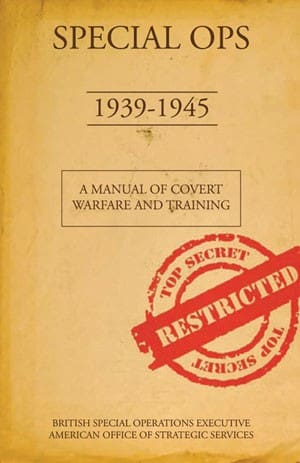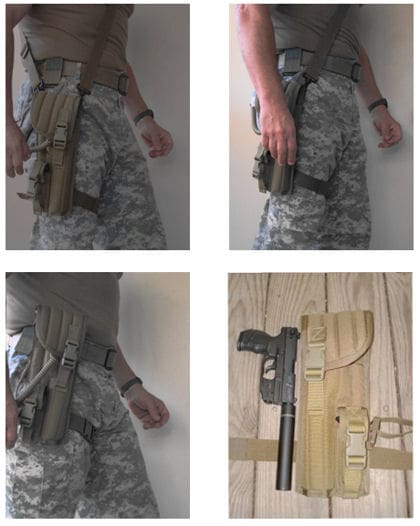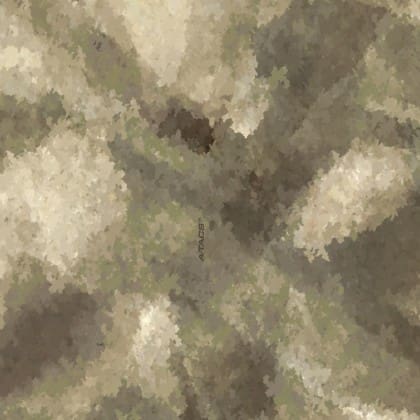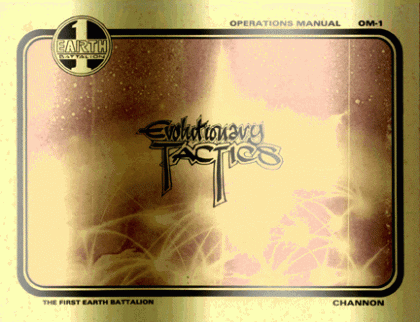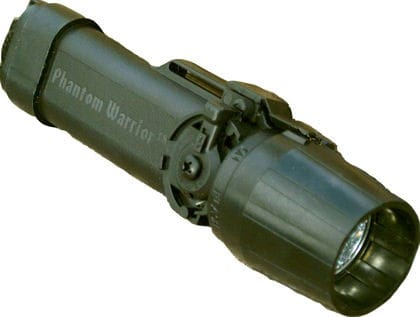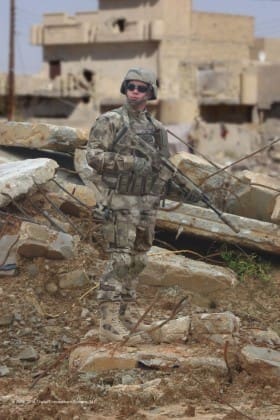Originally called the Army Combat Pant and for a short period referred to as the Fire Resistant Ruggedized Pant, the program has transformed into the FR ACU Trouser Product Improvement Program. Ultimately, what this means is that PEO-Soldier is working hard to transform the FR ACU into an even more combat focused garment rather than developing yet another garment.
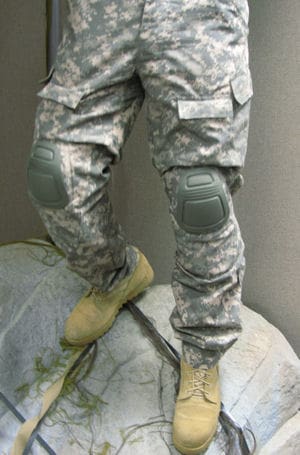
In an interview yesterday with LTC Mike Sloane, Product Manager Soldier Clothing and Individual Equipment, his Deputy PM Mr Todd Wendt, Mr Jeff Myrhe, Assistant Product Manager w/in PM SCIE and Mr Jed Watkins, Contract Support we discussed the latest information on this exciting project.
In addition to name changes, there have been some big changes in the goal of the project. But first let’s delve into the history of the project and then find out where it is going.
PEO Soldier identified issues with the seat, crotch, and knees of the ACU trouser based on feedback from Soldiers returning from theater. Specifically, in fall 2007, elements of the 173rd Airborne Brigade presented PEO Soldier with information describing failures of the ACU trouser and they began a full court press to correct these issues. Natick Soldier Research, Development & Engineering Center and industry partners prepared several solutions.
The evaluation process for these solutions is a journey that began in FY 2008 and will be completed later this year. In April 2008, seven variants of the trouser were issued to units in Hawaii, Alaska, and Vermont for a limited user evaluation. Unfortunately, none of the seven variants completely addressed the failures, but did provide valuable information for further improvements.
Massif Mountain Gear and Crye Precision collaborated on the next step, which resulted in the Massif Army Combat Pant Version 4.0A, which employed various weights of Defender M fabric and Defender M stretch fabric to make the seat and crotch more durable. At the same time, Crye Precision’s adjustable-height, integrated hard-shell knee pad design greatly improved the durability of the knee, providing greater protection to the Soldier. This feature in particular has been the most important solution in the project. External knee pads require constant adjustment and lightweight pads slipped into the knee pad slot of the trouser result in extra abrasion and worn knees.
This trouser was evaluated in two phases. Phase I was a human factors evaluation, conducted with 38 Soldiers from the 3d Battalion, 75th Ranger Regiment at Fort Benning from 11 January to 23 February 2009. Phase II involved 222 Soldiers from the 150th Armored Recon Squadron of the West Virginia National Guard, who evaluated the pant for dismounted functionality and vehicle compatibility during pre-deployment training at the National Training Center from 4 March to 2 April 2009.
Based on lessons learned from the previous phases, a new full and open competition was recently held to allow manufacturers to submit their version of the trouser. Five companies competed. Crye Precision won that competition and is producing 7,020 pairs of combat pants. The Crye trouser is a bit of a departure from previous incarnations as they have replaced the mechanical stretch fabric with a gusset design. These will be tested during Phase III of the evaluation. Testing will be conducted beginning in the 2nd quarter of FY10 with an infantry brigade deployed to Operation ENDURING FREEDOM and each Soldier will receive two pairs of the Crye trouser in addition to their normal complement of FR ACUs. This evaluation is more than a simple test and will deliver actual enhanced capability to the Soldiers involved as the enhancements are refinements of earlier solutions.
Additionally, the focus of the evaluation will no longer be to determine user acceptance of the whole garment. Instead, PEO-Soldier wants to determine which features of the garment are most effective in fixing the problem areas. The Infantry School drives requirements and will make the recommendations to the Army Uniform Board as to which improvements will be integrated into FR ACU. The Chief of Staff of the Army is the final approving authority for these modifications.
When asked if there were plans to remove the FR ACU from service and transform to an ACU for garrison use and ACP/ACS combo for combat operations, the answer was a simple “No”. However, PEO-Soldier officials caveated this statement by relating that the FR ACU will undergo a transformation in the future, making it a much different garment than we see today. In the interim, once approved by the CSA, the improvements to the FR ACU will trouser will greatly enhance the capability of our troops operating in Afghanistan and other regions around the world.


